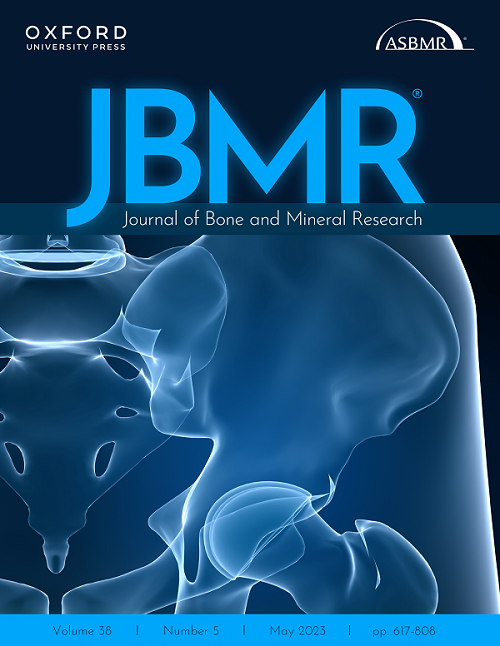在白血病治疗后出现普遍骨坏死病变的儿童早期,骨密度明显降低
Jacqueline M. Halton, Jinui Ma, Paul Babyn, Mary Ann Matzinger, Sue C. Kaste, Maya Scharke, Conrad V. Fernandez, Paivi Miettunen, Josephine Ho, Nathalie Alos, Sharon Abish, Ronald Barr, Elizabeth Cairney, David B. Dix, Ronald M. Grant, Sara Israels, Victor Lewis, Beverly Wilson, Stephanie Atkinson, David Cabral, Elizabeth Cummings, Celia Rodd, Robert Stein, Anne Marie Sbrocchi, Jacob L. Jaremko, Khaldoun Koujok, Nazih Shenouda, Frank Rauch, Kerry Siminoski, Leanne M. Ward, the Canadian STOPP Consortium
下载PDF
{"title":"在白血病治疗后出现普遍骨坏死病变的儿童早期,骨密度明显降低","authors":"Jacqueline M. Halton, Jinui Ma, Paul Babyn, Mary Ann Matzinger, Sue C. Kaste, Maya Scharke, Conrad V. Fernandez, Paivi Miettunen, Josephine Ho, Nathalie Alos, Sharon Abish, Ronald Barr, Elizabeth Cairney, David B. Dix, Ronald M. Grant, Sara Israels, Victor Lewis, Beverly Wilson, Stephanie Atkinson, David Cabral, Elizabeth Cummings, Celia Rodd, Robert Stein, Anne Marie Sbrocchi, Jacob L. Jaremko, Khaldoun Koujok, Nazih Shenouda, Frank Rauch, Kerry Siminoski, Leanne M. Ward, the Canadian STOPP Consortium","doi":"10.1002/jbmr.4870","DOIUrl":null,"url":null,"abstract":"<p>Osteonecrosis (ON) is a serious complication of childhood acute lymphoblastic leukemia. We determined the prevalence of osteonecrotic lesions in our patient population by a one-time multisite magnetic resonance imaging (MRI) more than 1 year following leukemia therapy. MRI findings were evaluated in relationship to clinical factors (including longitudinal changes in bone mineral density [BMD]). Eighty-six children enrolled in the Steroid Associated Osteoporosis in the Pediatric Population (STOPP) study were evaluated for ON at 3.1 ± 1.3 years following therapy. Thirty children had a total of 150 confirmed ON lesions (35%). Lumbar spine (LS) BMD <i>Z</i>-scores (mean ± SD) were low at diagnosis and similar between patients with and without ON (−1.09 ± 1.53 versus −1.27 ± 1.25, <i>p</i> = 0.549). LS BMD <i>Z</i>-scores declined from baseline to 12 months in children with ON (−0.31 ± 1.02) but not in those without (0.13 ± 0.82, <i>p</i> = 0.035); the hip BMD <i>Z</i>-scores from baseline to 24 months declined in both groups, but to a greater extent in those with ON (−1.77 ± 1.22) compared to those without (−1.03 ± 1.07, <i>p</i> = 0.045). At the time of the MRI, mean total hip and total body (TB) BMD <i>Z</i>-scores were lower in children with ON (hip −0.98 ± 0.95 versus −0.28 ± 1.06, <i>p</i> = 0.010; TB −1.36 ± 1.10 versus −0.48 ± 1.50, <i>p</i> = 0.018). Pain occurred in 11/30 (37%) with ON versus 20/56 (36%) without, <i>p</i> = 0.841. In multivariable models, older age at diagnosis (odds ratio [OR] 1.57; 95% confidence interval [CI], 1.15–2.13; <i>p</i> = 0.004), and hip BMD <i>Z</i>-score at MRI (OR 2.23; 95% CI, 1.02–4.87; <i>p</i> = 0.046) were independently associated with ON. Overall, one-third of children demonstrated ON after leukemia therapy. Those with ON had greater reductions in spine and hip BMD <i>Z</i>-scores in the first 1 and 2 years of therapy, respectively. Older age and lower hip BMD <i>Z</i>-scores at MRI were significantly associated with prevalent, off-therapy ON. These data assist in identifying children at risk of ON. © 2023 The Authors. <i>Journal of Bone and Mineral Research</i> published by Wiley Periodicals LLC on behalf of American Society for Bone and Mineral Research (ASBMR).</p>","PeriodicalId":185,"journal":{"name":"Journal of Bone and Mineral Research","volume":"38 8","pages":"1104-1115"},"PeriodicalIF":5.1000,"publicationDate":"2023-06-16","publicationTypes":"Journal Article","fieldsOfStudy":null,"isOpenAccess":false,"openAccessPdf":"https://onlinelibrary.wiley.com/doi/epdf/10.1002/jbmr.4870","citationCount":"0","resultStr":"{\"title\":\"Reductions in Bone Mineral Density Are Apparent Early in Children With Prevalent Osteonecrosis Lesions Following Leukemia Therapy\",\"authors\":\"Jacqueline M. Halton, Jinui Ma, Paul Babyn, Mary Ann Matzinger, Sue C. Kaste, Maya Scharke, Conrad V. Fernandez, Paivi Miettunen, Josephine Ho, Nathalie Alos, Sharon Abish, Ronald Barr, Elizabeth Cairney, David B. Dix, Ronald M. Grant, Sara Israels, Victor Lewis, Beverly Wilson, Stephanie Atkinson, David Cabral, Elizabeth Cummings, Celia Rodd, Robert Stein, Anne Marie Sbrocchi, Jacob L. Jaremko, Khaldoun Koujok, Nazih Shenouda, Frank Rauch, Kerry Siminoski, Leanne M. Ward, the Canadian STOPP Consortium\",\"doi\":\"10.1002/jbmr.4870\",\"DOIUrl\":null,\"url\":null,\"abstract\":\"<p>Osteonecrosis (ON) is a serious complication of childhood acute lymphoblastic leukemia. We determined the prevalence of osteonecrotic lesions in our patient population by a one-time multisite magnetic resonance imaging (MRI) more than 1 year following leukemia therapy. MRI findings were evaluated in relationship to clinical factors (including longitudinal changes in bone mineral density [BMD]). Eighty-six children enrolled in the Steroid Associated Osteoporosis in the Pediatric Population (STOPP) study were evaluated for ON at 3.1 ± 1.3 years following therapy. Thirty children had a total of 150 confirmed ON lesions (35%). Lumbar spine (LS) BMD <i>Z</i>-scores (mean ± SD) were low at diagnosis and similar between patients with and without ON (−1.09 ± 1.53 versus −1.27 ± 1.25, <i>p</i> = 0.549). LS BMD <i>Z</i>-scores declined from baseline to 12 months in children with ON (−0.31 ± 1.02) but not in those without (0.13 ± 0.82, <i>p</i> = 0.035); the hip BMD <i>Z</i>-scores from baseline to 24 months declined in both groups, but to a greater extent in those with ON (−1.77 ± 1.22) compared to those without (−1.03 ± 1.07, <i>p</i> = 0.045). At the time of the MRI, mean total hip and total body (TB) BMD <i>Z</i>-scores were lower in children with ON (hip −0.98 ± 0.95 versus −0.28 ± 1.06, <i>p</i> = 0.010; TB −1.36 ± 1.10 versus −0.48 ± 1.50, <i>p</i> = 0.018). Pain occurred in 11/30 (37%) with ON versus 20/56 (36%) without, <i>p</i> = 0.841. In multivariable models, older age at diagnosis (odds ratio [OR] 1.57; 95% confidence interval [CI], 1.15–2.13; <i>p</i> = 0.004), and hip BMD <i>Z</i>-score at MRI (OR 2.23; 95% CI, 1.02–4.87; <i>p</i> = 0.046) were independently associated with ON. Overall, one-third of children demonstrated ON after leukemia therapy. Those with ON had greater reductions in spine and hip BMD <i>Z</i>-scores in the first 1 and 2 years of therapy, respectively. Older age and lower hip BMD <i>Z</i>-scores at MRI were significantly associated with prevalent, off-therapy ON. These data assist in identifying children at risk of ON. © 2023 The Authors. <i>Journal of Bone and Mineral Research</i> published by Wiley Periodicals LLC on behalf of American Society for Bone and Mineral Research (ASBMR).</p>\",\"PeriodicalId\":185,\"journal\":{\"name\":\"Journal of Bone and Mineral Research\",\"volume\":\"38 8\",\"pages\":\"1104-1115\"},\"PeriodicalIF\":5.1000,\"publicationDate\":\"2023-06-16\",\"publicationTypes\":\"Journal Article\",\"fieldsOfStudy\":null,\"isOpenAccess\":false,\"openAccessPdf\":\"https://onlinelibrary.wiley.com/doi/epdf/10.1002/jbmr.4870\",\"citationCount\":\"0\",\"resultStr\":null,\"platform\":\"Semanticscholar\",\"paperid\":null,\"PeriodicalName\":\"Journal of Bone and Mineral Research\",\"FirstCategoryId\":\"3\",\"ListUrlMain\":\"https://onlinelibrary.wiley.com/doi/10.1002/jbmr.4870\",\"RegionNum\":1,\"RegionCategory\":\"医学\",\"ArticlePicture\":[],\"TitleCN\":null,\"AbstractTextCN\":null,\"PMCID\":null,\"EPubDate\":\"\",\"PubModel\":\"\",\"JCR\":\"Q1\",\"JCRName\":\"ENDOCRINOLOGY & METABOLISM\",\"Score\":null,\"Total\":0}","platform":"Semanticscholar","paperid":null,"PeriodicalName":"Journal of Bone and Mineral Research","FirstCategoryId":"3","ListUrlMain":"https://onlinelibrary.wiley.com/doi/10.1002/jbmr.4870","RegionNum":1,"RegionCategory":"医学","ArticlePicture":[],"TitleCN":null,"AbstractTextCN":null,"PMCID":null,"EPubDate":"","PubModel":"","JCR":"Q1","JCRName":"ENDOCRINOLOGY & METABOLISM","Score":null,"Total":0}
引用次数: 0
引用
批量引用


